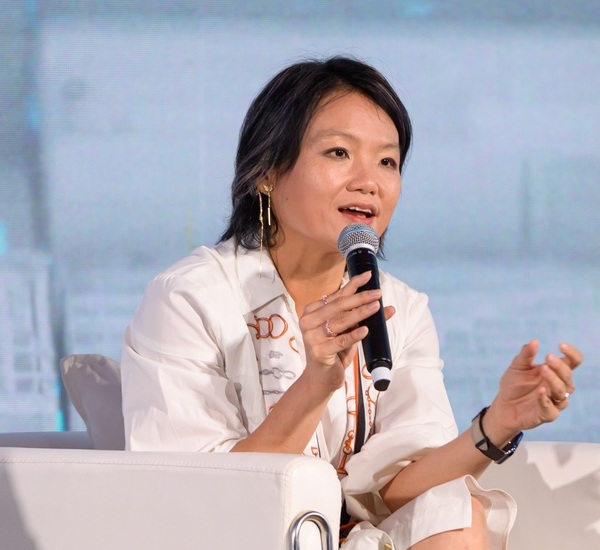Insights, Events and Videos
The future of healthcare is a combination of online and offline services, says Jessica Tan, Co-CEO of Ping An Group. With aging populations across Asia and the world, fostering healthcare innovation is the right solution to the challenges facing the global healthcare industry.
"Whichever country you live in, you will argue that you can get better, cheaper, faster healthcare service, and that there aren't enough doctors. I think technology can help with both,” Ms. Tan said at the recent Asia Tech x Singapore Summit.
Daily healthcare support for the elderly
Ping An sees massive potential in leveraging technology for elderly care. Its subsidiary Ping An Life launched a home-based elderly care service in 2021 in China, where the population of people over 60 is expected to grow from 264 million+ in 2020 to 402 million by 2040. About 90% of elders in Asia are likely to live at home instead of going to a nursing home. Ping An’s 24-hour online butler service supports individuals living at home with elderly care technology such as health monitoring, reminders to do daily exercises, and an online doctor. For children unable to live with their aging parents, and many individuals reluctant to move into nursing homes, online services help bridge the gap in healthcare and elderly care. “The results have been fantastic because their children really like it,” Ms. Tan said. “I think there’s a lot of potential, and we’re only starting.”
The elderly care butler service is connected to smart health monitoring devices that track blood sugar, blood pressure, heart rate, breathing rate and blood oxygen level. When the system detects abnormalities, it issues an early warning, so the butler can respond quickly and notify emergency contacts and family doctors when necessary. It can also monitor 13 behavioral risks, including accidental falls, sleep quality, daily exercise, and nine major environmental risks in the user’s home in real-time, such as air quality, gas leakage, and excessive smoke concentration.
Supported by a flagship medical team of about 2,000 doctors, Ping An’s elderly care technology offers comprehensive home-based elderly care services, which can provide 24-hour remote medical diagnosis and treatment, ensuring high-quality healthcare for the elderly. Ping An can provide fast-track services or medical escort services to tertiary hospitals when needed.
Better access and quality elderly care
The second opportunity elderly care technology provided is in artificial intelligence-driven consultation and treatment assistant tools for doctors, Ms. Tan said. “I think technology can help – not to replace doctors, but to improve the accessibility and the quality of care,” she said. Ping An’s AskBob AI Doctor, launched in 2019, learns from clinical practice guidelines, experts’ views and an extensive database of case studies to provide diagnostic and treatment assistance to doctors, thereby improving elderly care.
In China, there are only 3.8 million doctors for a population of 1.4 billion. In third- and fourth-tier cities, doctors may not have the same level of knowledge and experience as those in the major cities. With AskBob, “we find the misdiagnosis rate can drop dramatically,” Ms. Tan said. “The doctor still makes the final decision, but the machine frankly does a job much more systematically and without biases.”By leveraging technology like AskBob, elderly care technology can enhance the diagnostic accuracy and quality of care, especially in areas where access to highly experienced doctors may be limited. This innovation holds the potential to bridge the gap and improve outcomes for the elderly care.
Regulatory support needed for elderly care
Governments could encourage more cooperation between the public and private sectors to harness the potential of digital healthcare, Ms. Tan said. For example, a secure government app and a regulatory framework could encourage the cooperation among healthcare service providers, insurers, and consumers on a shared platform. “Healthcare by definition has to be open, and that’s where various governments can play a role in encouraging other players to do so,” she said.
Digital healthcare is still in its infancy. Ms. Tan noted that only 3% to 5% of healthcare service is provided online in many countries. It is extremely small compared to the e-commerce industry in China today, where more than 50% of shopping is now done online. “Healthcare is a very regulated and traditional industry and we are not aggressive enough,” she noted, adding that with more regulatory support, industry players would be incentivized to drive digital innovations in healthcare.
By promoting collaboration, implementing secure platforms, and providing regulatory encouragement, governments can facilitate the expansion of digital healthcare -specifically elderly care technology - in elderly care, and transform the industry to bettter meet the evolving needs of the population.
